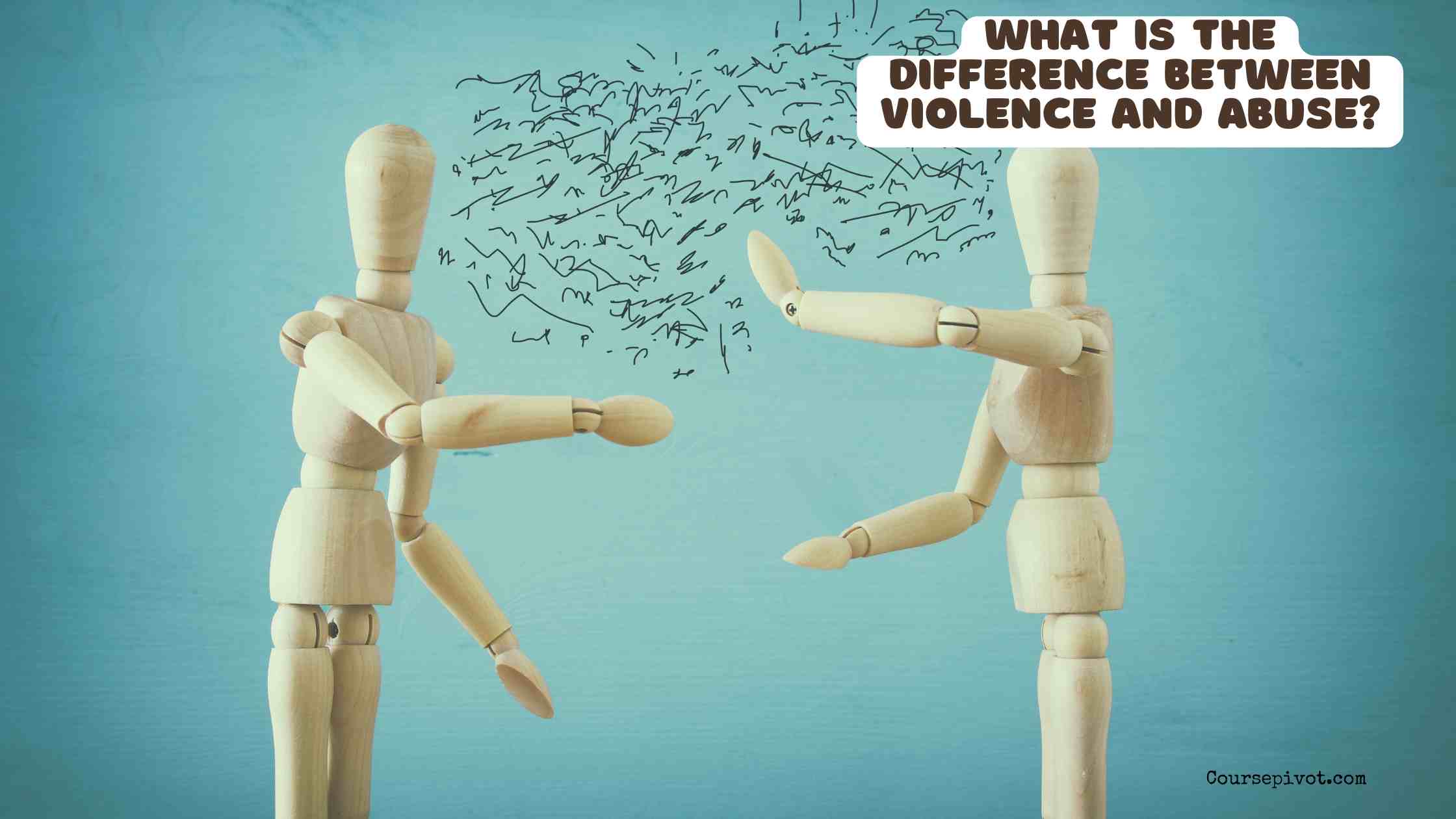
What Is the Difference Between Violence and Abuse?
Violence and abuse are related but distinct concepts: violence typically refers to physical acts causing harm, while abuse encompasses a broader range of harmful behaviors, including physical, emotional, psychological, or sexual mistreatment, often involving power dynamics. Both can overlap, but their scope and intent differ, impacting how they’re addressed in relationships, legal systems, and society. This blog explores five key distinctions between violence and abuse, with examples, insights, and practical tips, empowering you to recognize and respond to these behaviors effectively.
Table of Contents
Definition and Scope
Violence is the use of physical force intended to cause injury, damage, or death. It’s often immediate and visible, like hitting, punching, or using a weapon. It’s about physical impact. For example, a person throwing a chair in a fight commits violence.
Abuse is a pattern of behavior that seeks to control, manipulate, or harm another person, which may or may not involve physical force. It includes emotional (e.g., insults), psychological (e.g., gaslighting), sexual, or financial harm. It’s about control over time. A partner constantly belittling someone to undermine their self-esteem is abusive, even without physical contact. Abuse is broader, encompassing violence but extending to non-physical acts.
Intent and Power Dynamics
Violence often stems from immediate anger, conflict, or situational escalation, not always aiming to dominate. For instance, a bar fight between strangers may be violent but not necessarily abusive if it’s a one-off incident. Intent is situational.
Abuse is rooted in establishing or maintaining power and control over someone, often in relationships. It’s typically repetitive, with the abuser leveraging fear or manipulation. A parent withholding money to control a teen’s choices is financial abuse, reflecting a power imbalance. This intent to dominate distinguishes abuse, especially in domestic or familial contexts.
Duration and Pattern
Violence can be a single act or sporadic, without a consistent pattern. A random assault in a public place is violent but not necessarily part of ongoing behavior. It’s often isolated.
Abuse usually involves a recurring pattern, creating a cycle of harm. For example, a spouse repeatedly isolating their partner from friends to control them exhibits abusive behavior over time. This ongoing nature makes abuse particularly damaging, as it erodes trust and self-worth gradually.
Types and Manifestations
Violence is primarily physical, such as hitting, shoving, or stabbing, and its effects are often tangible, like bruises or broken bones. It’s direct and measurable, like a punch causing a black eye.
Abuse spans multiple forms:
- Physical: Hitting or restraining, overlapping with violence.
- Emotional: Name-calling, shaming, or humiliating.
- Psychological: Gaslighting or manipulating to distort reality.
- Sexual: Forcing unwanted acts or withholding intimacy as punishment.
- Financial: Controlling money to limit independence.
For instance, a boss who constantly criticizes an employee’s work to demean them is emotionally abusive, distinct from a one-time violent outburst.
Legal and Social Responses
Violence often triggers immediate legal consequences, like assault charges, due to its clear physical evidence. A 2024 FBI Crime Report notes that violent crimes (e.g., aggravated assault) lead to arrests in 60% of reported cases. Police or courts focus on physical harm and public safety.
Abuse, especially non-physical forms, is harder to prosecute due to lack of visible evidence. Emotional or financial abuse may require restraining orders or civil action, but only 20% of cases lead to legal outcomes, per a 2024 National Domestic Violence Hotline report. Socially, violence is broadly condemned, while abuse (e.g., verbal manipulation) may be dismissed as “normal” conflict, delaying intervention.
Practical Tips for Recognizing and Responding
Here’s how to identify and address violence or abuse:
- Know the Signs: Violence leaves physical marks (e.g., bruises); abuse may show as fear, anxiety, or withdrawal.
- Document Incidents: Record dates, times, and details of abusive behavior (e.g., texts, emails) for legal or support purposes.
- Seek Help: Contact hotlines like the National Domestic Violence Hotline (1-800-799-7233) for abuse or 911 for immediate violent threats.
- Set Boundaries: If safe, communicate limits to stop abusive patterns early, like refusing to engage with insults.
- Educate Others: Share resources on platforms like X to raise awareness about non-physical abuse.
These steps can reduce harm. For example, a person documenting a partner’s verbal abuse built a case for a restraining order, finding safety.
Why the Distinction Matters
Understanding the difference between violence and abuse is critical for effective intervention. Violence demands immediate safety measures, while abuse requires addressing long-term control dynamics, often through counseling or legal support. Mislabeling abuse as mere conflict can delay help, affecting 30% of victims, per domestic violence studies. Clarity empowers victims and communities to act appropriately.
Read The Religious Conflict in Nigeria: What Are Factors That Contribute to the Violence?
Key Takeaways
Violence involves physical harm, like hitting, while abuse includes physical, emotional, or psychological control, such as ongoing belittling to dominate a partner. Violence is often a single act, but abuse is a pattern rooted in power. Recognize signs, document incidents, and seek help to address either. Dr. Sarah Kline, a psychologist, emphasizes that distinguishing these terms enables targeted support, protecting individuals from harm and fostering healthier relationships.
Cite this article
You can copy and paste your preferred citation format below.
Martin, L. & Arquette, E.. (2025, September 16). What Is the Difference Between Violence and Abuse?. Coursepivot.com. https://coursepivot.com/blog/what-is-the-difference-between-violence-and-abuse/


